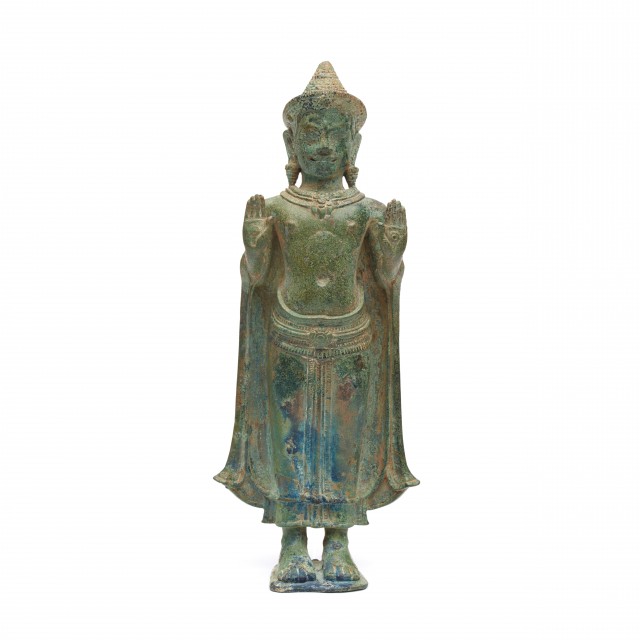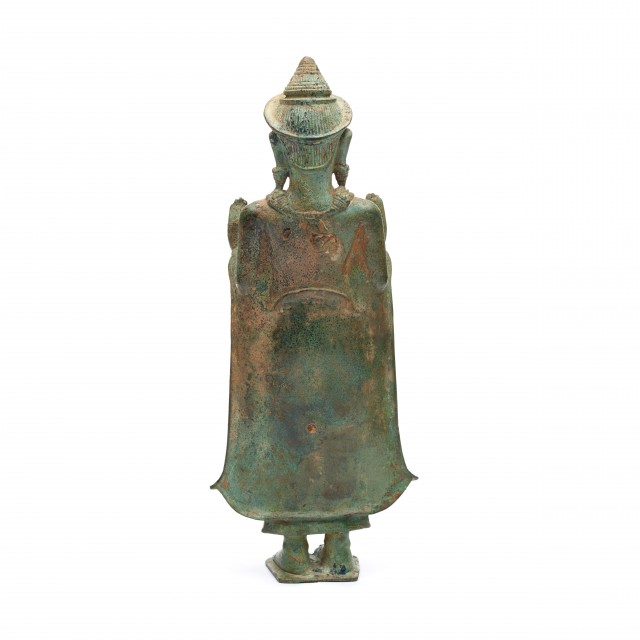
Crowned Buddha

Photography by Synthescape, Digital image © Asia Society

Photography by Synthescape, Digital image © Asia Society
Crowned Buddha
11th-12th century
Thailand
Copper alloy
H. 9 1/4 x W. 3 3/4 x D. 2 1/2 in. (23.5 x 9.5 x 6.3 cm)
Asia Society, New York: Mr. and Mrs. John D. Rockefeller 3rd Collection, 1979.80
Provenance
John D. Rockefeller 3rd, New York, NY; acquired from Laurence Sickman, Kansas City, MO, 1959.
The Asia Society, New York, NY, bequest of John D. Rockefeller 3rd, New York, NY, 1979.
Licensing inquiries
This standing Buddha performs the gesture of reassurance (abhaya mudra) with both hands. The double gesture, which is unknown in India, may be the result of Indian images that had been shipped to Thailand, but had lost one or both hands. Thai artisans, who modeled their Buddhas after Indian examples, then extrapolated what the missing gestures might have been. The style of the Buddha, with its fleshy square-jawed face, pointed crown, and stocky body, reveals the impact of the art of the Khmer empire in central and northeastern Thailand from the late 11th to the early 13th century. This type of standing crowned Buddha can be traced back to a Khmer Vajrayana (Esoteric) Buddhist temple built at Phimai in the late 11th and early 12th centuries in northeastern Thailand. Although a crown and jewelry on a Buddha usually indicate that the image was created in the service of Vajrayana Buddhism, in Thailand and Cambodia, the crowned Buddha became popular among practitioners of other types of Buddhism such as Mahayana and Theravada and it is unclear for which tradition this Buddha was created.



